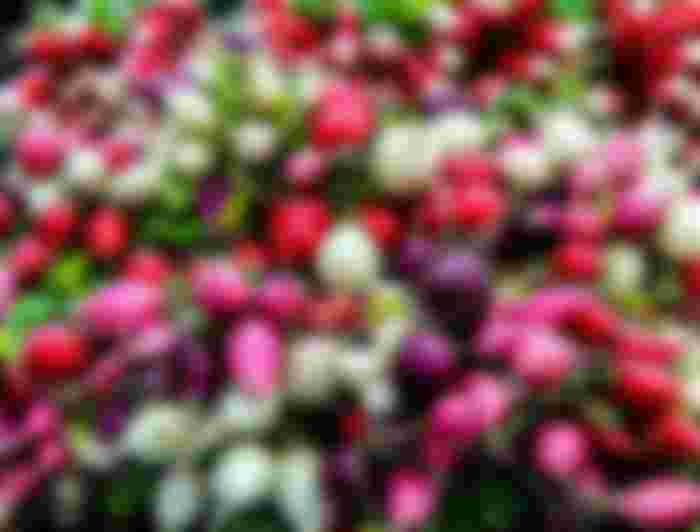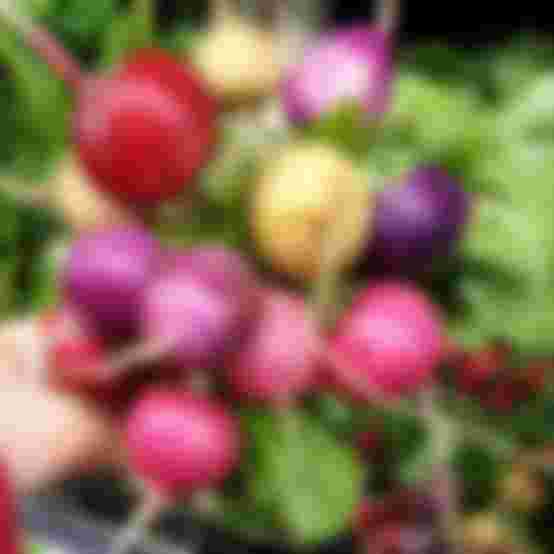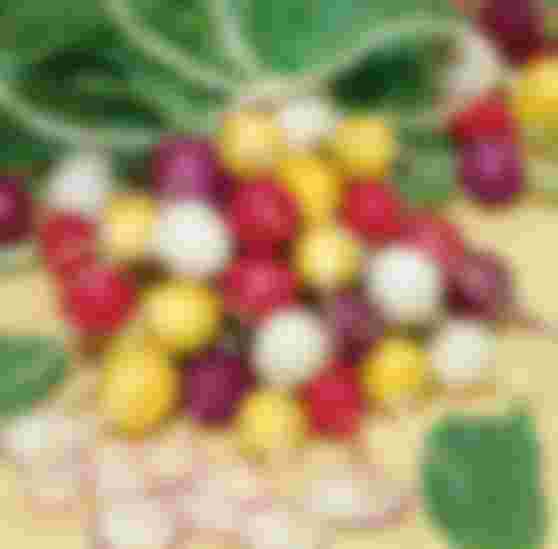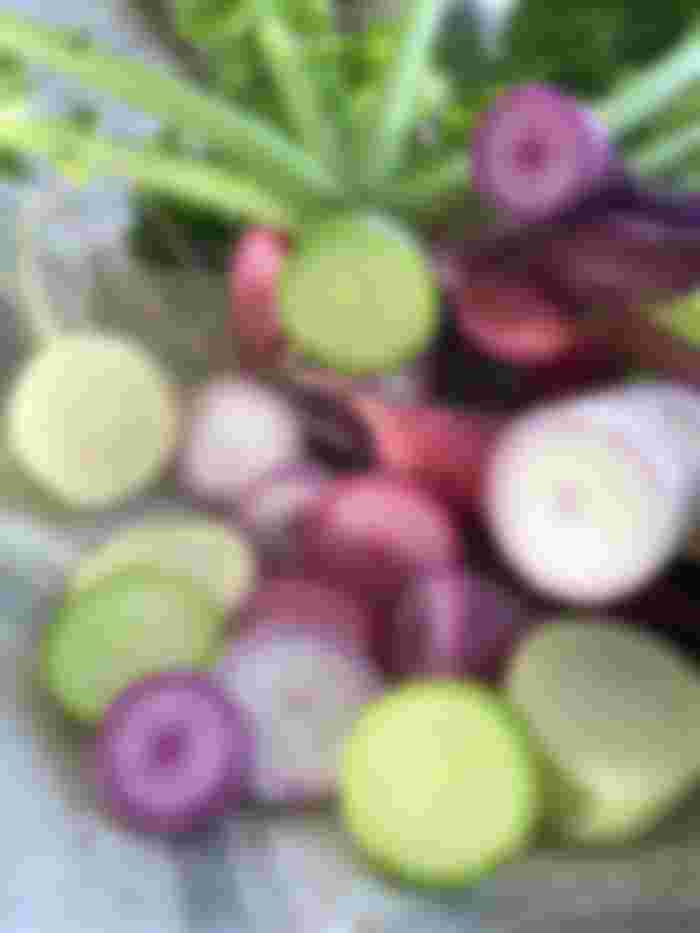
Radish is a staple vegetable, radish was a domestic food of the Brassicaceae family in Europe before the Romans. Radish is grown and eaten all over the world, most of the time it is eaten as a raw salad vegetable. Radishes are very varied, different in shape, fragrant, different colors and different times of maturation.Due to the emission of various mixed chemicals by the radish plant, it has a pungent odor, which is associated with glucosinolate, myrosinase and isothiocyanate. Radish is sometimes grown as a companion vegetable to other vegetables, and suffers from some pests and diseases. They germinate quickly and grow quickly, small varieties are suitable for eating within a month, whereas large varieties take several months. Radish is usually used in the market as a winter vegetable to fill the deficit, just like neglected vegetables. Some radishes are born from their seeds. For example some oils are probably used for production. Some are used to make seeds and both radish and radish leaves are occasionally cooked as cold food.
Different types of radishes are now distributed over many distances around the world, but no ancient documents have yet been found that indicate the early history of radishes. However, scientists have traced the early history of experiments to the fact that it originated in Southeast Asia, an area where really wild plants are discovered. India, Central China and Central Asia appear to be the second centers where different varieties of improved radishes are found. Radish archeological documents date back to the third century BC Greek and Roman agriculturists in the first century add details to the roots of small, large, round, long, light and sharp varieties. Radish is known in America as one of the first European crops. A German botanist reported in 1544 that a radish weighed 45 kg and was about 3 feet long, although different sizes of Sakurajima radishes are now available in Japan. Large, light and white East Asian radishes were developed in China, but for the most part it was a concerted effort to cultivate Japanese radishes with the West.
Radish is an annual and biennial brassicaceous crop and grows from their early swollen mouths. Radishes are usually round, narrowed or cylindrical in shape. Its initial skin color ranges from white to pink, red, purple, yellow and green to black, but the inner part is usually white. The small-sized gourd has a number of leaves which are 13 cm (5 inches) long with round gourds. Round radish maximum 2.5 cm (1 inch) diameter and more slender, long radish maximum 6 cm (3 inches) long. Both types of radishes are usually eaten as a raw salad. To be a tall radish, so that the eastern radish exists, daikon or radish and winter radish 60 cm. (24 inches), with leaves 60 cm long. (24 inches) which is up to 45 cm. (18 inches) wide. The inner part of the radish collected over time is crispy and sweet, but bitter and hard if the crop is left in the field for a long time. Its leaves are like round shaped badges.They become lirate-shaped, which means they split into pinatli (leaves on both sides of the whistle) with an exploding margin segment and smaller lateral segments. White flowers give birth to inflorescences. The fruits are small pods that can be eaten when it is young in age.
Radish is a diploid species and has 18 pairs of chromosomes (2n = 18).
Cultivation:
Radish is known as a fast growing, annual and winter crop. Seeds germinate in three to four days in humid weather when the soil temperature is 65 to 65 degrees Fahrenheit (18 to 29 degrees Celsius). Good quality radishes are collected at tolerable temperatures with an air temperature of 50 to 65 degrees Fahrenheit (10 to 18 degrees Celsius). At average temperatures the crop grows in 3 to 4 weeks, but in cold weather, it probably takes six to seven months.
Radishes grow well when fully exposed to light, sandy loam soils with a soil pH of 6.5 to 7.0, but late soils are best with loamy soils. The soil dries out in the heat of the sun and in dry weather the soil has a hard covering which is not good at all and it can weaken the germination of seeds. Re-planting can increase the harvest time, which is like a spawn. For hot weather, radishes are usually planted in the autumn. The depth of the seed that is planted affects the shape of the seed. For small radishes 1 cm is recommended. (0.4 inches) deep and 4 cm (1.6 inches) deep for large radishes. As it grows, the crop needs water and weed removal, and irrigation may be required depending on the situation.

Radish is known as a universal field crop in America, and the early season crop collection that is popular for children, in the work of creating children's gardens. Radishes can be stored after harvest without any change in quality, radishes are kept at normal temperature for two to three days, and relative humidity is 90-95% with two months 0 ০ C.
Companion vegetables:
Radish is used as a beneficial companion vegetable for other vegetables, as the pungent odor of radish probably prevents insects such as jabpoka, cucumber insect, tomato deer worms, microbes and ants. Radish can act as a snare crop, which lures insects away from the main crop. When cucumber and radish are planted together, it gives a good crop which has been tested. Radish grows well with charcoal, lettuce, peas and nasturtium tumors. Although they show adverse reactions when growing with perfume.
Disease-plague:
Although a fast growing vegetable, pests are not usually a problem for radishes, but some insects can cause nuisance here. Insects and dung beetles (Delia radicum) live in the soil, but adult dung beetles damage crops, eat leaves, and especially hinder seed germination. The stinging insect (Continernia nasturtil) attacks the leaves and grows on the tops of the trees and impairs the growth of the tree, there are many suggestions for the growth of the tree for the formation of swollen or undulating leaves and stems. Caterpillars occasionally attack the roots. The petals occasionally droop and fade, and as they get smaller, white insects make holes in the mulberry, making it unattractive and inedible.
Diversity:

Roughly speaking, radishes can be classified into four main seasons according to the season, when they grow, and the variety of textures, colors and sizes, such as red, pale red, white, gray, black or yellow radishes that are round or elongated and which are from carrots. Could be larger.





Wow